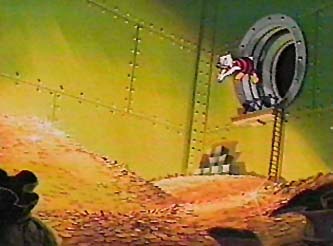What you are about to read is a tale of two currencies, both of which are very much at odds with each other. On one side of the ring we have the one dollar bill, lovingly known by millions as “buck,” “greenback,” “single” and “one.” On the other side of the ring we have our underdog: the dollar coin, known by thousands as “dollar coin.” Theirs is a tale of abuse, neglect and, most importantly, the possibility of a shiny new future.
Will The Greenback Ever Die?
Currently the one dollar bill is the most common denomination of U.S. currency. In fact, in 2009 42% of all U.S. currency produced was the dollar bill. With such prominent placement in the U.S. citizen’s wallet it’s hard to imagine the dollar bill ever being replaced or cut out of circulation.
 As ubiquitous as the dollar bill is now, its death is basically inevitable. The only question is when will it actually cease to be produced? The world seems to be moving slowly to P2P payments, near field communication (NFC) payments and, of course, the ever increasing use of debit and credit cards. While all of these technological advances (and others that might not have been invented yet) surely will one day phase out the use of a physical currency it’s going to be a very slow process, taking decades before physical currencies truly begin to disappear.
As ubiquitous as the dollar bill is now, its death is basically inevitable. The only question is when will it actually cease to be produced? The world seems to be moving slowly to P2P payments, near field communication (NFC) payments and, of course, the ever increasing use of debit and credit cards. While all of these technological advances (and others that might not have been invented yet) surely will one day phase out the use of a physical currency it’s going to be a very slow process, taking decades before physical currencies truly begin to disappear.
The Coin Dilemma
Several attempts have been made since 1971 to phase in a coin in place of the one dollar bill. All of these attempts have been met with strong resistance. In 2000 the Government Accountability Office reported that replacing the dollar bill with a coin could save $500 million dollars a year. It was around this time that the Sacagawea dollar was introduced, to lukewarm reception. The Save the Greenback campaign (and paper and ink lobbyists) successfully prevented a dollar bill phaseout after the GAO reported the potential cost savings.

In December 2005 Congress decided to create a new set of dollar coins, this time honoring former U.S. Presidents. These coins were first introduced in 2007 and four new designs have been produced each year since their introduction. The program is expected to run through 2016.
It’s a sad existence for the dollar coin as it’s clearly not being used to the extent that it’s being created. In fact, it turns out that a huge number of these coins are being manufactured, bagged and then placed on a shelf, never to see the light of day. There are now over a billion of these coins sitting in vaults (for some lucky duck to swim in), according to a recent report by NPR.
To Replace The Bill With The Coin
There are several reasons why it might make sense to replace the bill with the coin, but with technology looking to slow down use of physical currency would it be too little, too late? It’s hard to say without knowing how long it will take to adopt other payment methods in favor of using a physical currency, but for fun let’s take a look at a few statistics about the dollar bill and the dollar coin.
- The average life of a dollar bill is under four years (approx 42 months).
- The expected life span of a coin? Approximately 30 years.
- This makes the expected life span of a coin about 8.5x longer than that of a bill.
- It costs approximately 30 cents to make the dollar coin and the government sells them for a dollar.
- Replacing the bill with a coin will net the government approximately $500 million dollars a year (according to the GAO).
With the benefits that would come along with replacing the bill with a coin, why don’t we just do it? The government has been trying to replace the bill, but so far with no success. The reason is obvious: it isn’t serious about replacing the bill with a coin. A simple cease production on the bill would force us to use the coin, making for a very quick adoption rate. Other countries have successfully introduced a replacement coin this way and things seemed to work out just fine (with very little the world-is-ending types of anarchy). If others have been successful with this route then we should be as well. The American consumer would likely accept the new coin for what it is, and life would go on.
What do you think? Do you like to use dollar coins? Do you find them more convenient than the dollar bill? My guess is that the majority of you will prefer the bill. Let me know your thoughts in the comments below. Should it be up to us though? If the dollar bill was cut off completely and replaced by the coin would you just accept it and move on? Or would you fight against The Man?